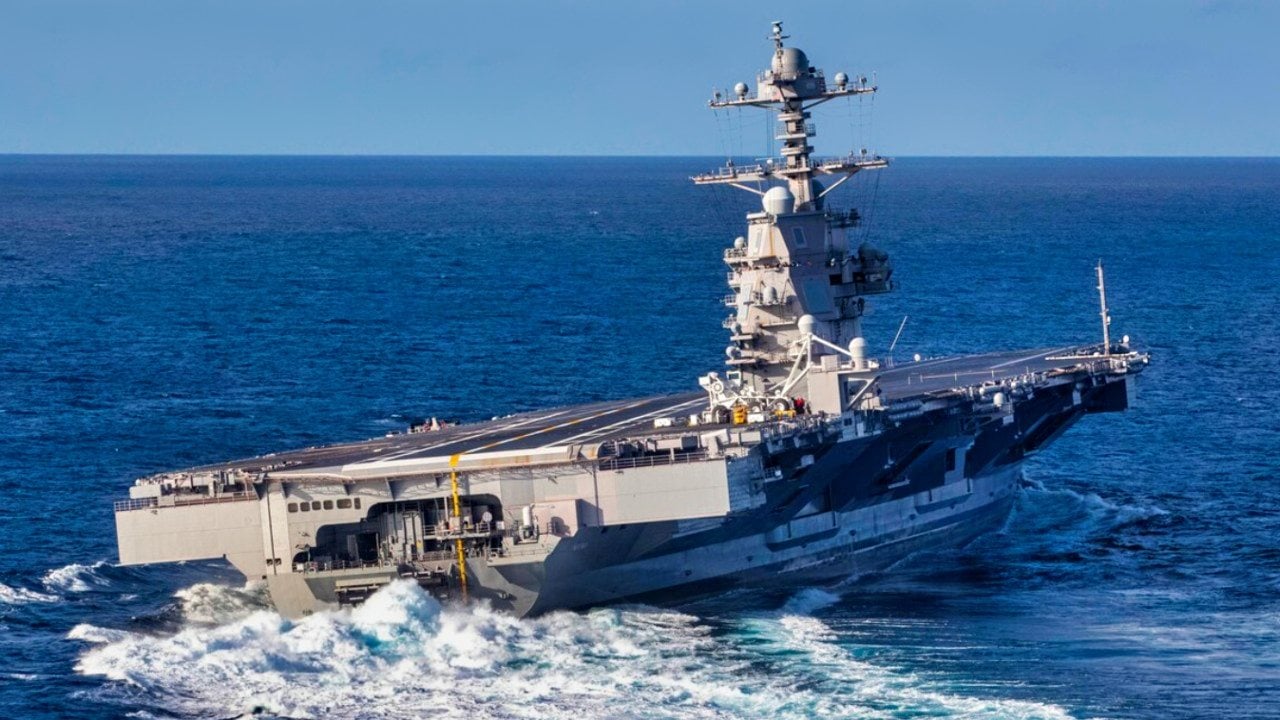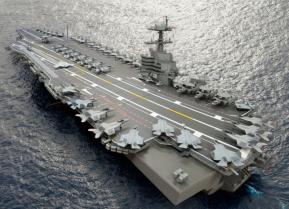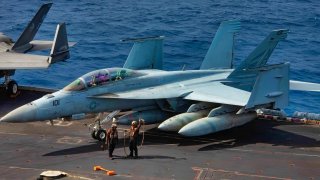Aircraft Carrier Showdown: Ford-Class vs. Nimitz-Class (Who Wins?)
The U.S. Navy is transitioning from the Nimitz-class to the Ford-class aircraft carriers, emphasizing advanced technology and increased operational efficiency. While both classes share a similar displacement of around 100,000 tons, the Ford-class boasts innovations like the electromagnetic aircraft launch system, advanced arresting gear, and a more diverse air wing, including the F-35C and UAVs.
Summary and Key Points: The U.S. Navy is transitioning from the Nimitz-class to the Ford-class aircraft carriers, emphasizing advanced technology and increased operational efficiency. While both classes share a similar displacement of around 100,000 tons, the Ford-class boasts innovations like the electromagnetic aircraft launch system, advanced arresting gear, and a more diverse air wing, including the F-35C and UAVs.
-With automation reducing crew size and operational costs, the Ford-class represents a significant evolution in naval warfare.
-Despite their high cost, these carriers are designed to maintain the U.S. Navy’s dominance in power projection.
The Nimitz-class vs. the Ford-class
The U.S. Navy is married to the aircraft carrier as the primary platform for power projection. There is no price the Navy won’t pay to keep the aircraft carrier relevant and dominant. Indeed, the Navy’s newest class of aircraft carriers, the Ford class, had an initial cost of $13 billion per ship.
Costs have since declined with three more of these vessels in the offing. But the price tag is still high, and especially so considering this is a system that could be destroyed by far cheaper defensive technologies.
America currently operates a fleet of 11 aircraft carriers, with 10 of them belonging to the older Nimitz class. Currently, only USS Gerald R. Ford, the namesake of the new Ford class, is serving. Upcoming Ford-class carriers are USS John F. Kennedy, USS Enterprise, and USS Doris Miller.
The Navy is transitioning away from the older Nimitz class to the Ford-class carriers.
The Nimitz vs. Ford Debate
Nimitz-class carriers were first commissioned in 1975, at the height of the Cold War. These nuclear-powered boats have a displacement of 100,000 tons. They feature four catapults for launching aircraft at sea and have three elevators to move aircraft about.
The Ford-class carriers retain the displacement of around 100,000 tons, but with a more modern hull that reduces drag and thus increases operational efficiency.
The Ford class uses an electromagnetic aircraft launch system, while Nimitz-class carriers still use steam catapults. What’s more, the Ford-class carriers have what is known as advanced arresting gear that helps make aircraft recovery at sea far more reliable and efficient. In fact, the Ford class is “optimized to maximize the sortie generation rate (SGR) of attached strike aircraft, resulting in a 25 percent increase in SGR over the Nimitz class.”
The Nimitz-class carrier operates more than 90 aircraft. These include fighters, helicopters, and early warning aircraft. The Ford class has an air wing of a comparable size but it is far more varied in the aircraft it can carry. For example, the Ford class can handle the F-35C Lightning II as well as unmanned aerial vehicles. So, while its air wing is comparable in size to its Nimitz-class predecessor, the makeup of the air wing is fundamentally different.
Both classes are nuclear-powered. The Nimitz uses two A4W nuclear reactors to drive four steam turbines, giving seemingly unlimited range to the storied aircraft carrier. The Ford class uses two newer A1B reactors, which require less maintenance and are far more efficient.
Understanding the Gerald R. Ford
The engineers behind the Ford class went all-in on automation. This boat has an integrated warfare system that makes it easier for the crew to manage information flows in combat. Whereas the Nimitz-class carrier has around 6,000 people serving onboard, the Ford class has just over 4,000. Automation makes this possible, reducing the risk to human life in combat situations.

Carriers are big targets, especially in today’s age of anti-access/area-denial. The Nimitz-class carrier comes equipped with a multitude of defense systems. These include the Phalanx close-in weapon system as well as Sea Sparrow missiles. The Ford class incorporates the latest in maritime defense capabilities. Among these advances is the SeaRAM missile system. Further, any real developments in laser weapons technology will be shared first with the Navy for their carrier fleet.
Because Nimitz-class aircraft carriers are older, they have needed greater maintenance. The Ford class, however, is an attempt by Navy planners to lower lifecycle costs through the aforementioned reduced crew requirements, less maintenance, and more efficient operations.
Whether you believe the expenditure on aircraft carriers was worth it, the fact remains that the Ford-class carriers are the most advanced systems floating on the waves today.They are not just an upgrade, but an evolution in naval warfare capabilities.
Author Experience and Expertise: Brandon J. Weichert
Brandon J. Weichert, a National Interest national security analyst, is a former Congressional staffer and geopolitical analyst who is a contributor at The Washington Times, the Asia Times, and The-Pipeline. He is the author of Winning Space: How America Remains a Superpower, Biohacked: China’s Race to Control Life, and The Shadow War: Iran’s Quest for Supremacy. His next book, A Disaster of Our Own Making: How the West Lost Ukraine, is due October 22 from Encounter Books. Weichert can be followed via Twitter @WeTheBrandon.
All images are Creative Commons or Shutterstock.
From the Vault
Russia Freaked Out: Why the U.S. Navy 'Unretired' the Iowa-Class Battleships
Battleship vs. Battlecruiser: Iowa-Class vs. Russia's Kirov-Class (Who Wins?)


